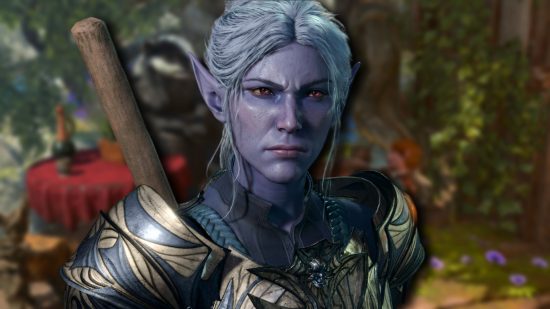What are the Baldur’s Gate 3 classes? With so many to choose from, each having their own playstyle, it’s important to know all of the playable classes and subclasses in Baldur’s Gate 3 and how each one plays so you can make the right decision. After all, you’ll be in it for the long haul with an RPG of this size. So, here’s all 12 Baldur’s Gate 3 classes and Baldur’s Gate 3 subclasses you can pick and what each one can do.
The huge variety of Baldur’s Gate 3 classes fighting for your attention will come in handy on any of the Baldur’s Gate 3 difficulty settings, though even more so on the punishing Tactician mode. With the Baldur’s Gate 3 length in the hundreds, the class and subclass diversity will also keep fans playing for months or even years to come. After all, Larian Studios’ previous game, Divinity Original Sin 2 has garnered quite the avid community. If you’re looking to dive in, check out Wargamers Baldur’s Gate 3 review to learn more.
Baldur’s Gate 3 classes
The Baldur’s Gate 3 classes are:
- Barbarian
- Bard
- Cleric
- Druid
- Fighter
- Monk
- Paladin
- Ranger
- Rogue
- Sorcerer
- Warlock
- Wizard
There’s a lot of diversity in the Baldur’s Gate 3 classes available, and it only gets more interesting the deeper you go thanks to subclasses that will let you specialize your character and playstyle even further. With so much variety on offer, there’s something for everyone in the Baldur’s Gate 3 classes list even if you’re not familiar with the traditional DnD classes.
You’ll need to think carefully about which of the classes and companions make up your party composition, as each class excels in different areas. For example, the Bard, Paladin, and other Charisma scaling classes can also be great for dialogue skill-checks outside of combat. Likewise, the Bard, Ranger, and Rogue provide great utility when exploring, letting you open new areas and containers with valuable loot.
As such, you will want a varied party making full use of the staggering number of Baldur’s Gate 3 classes and subclasses. Check out our guide to the Baldur’s Gate 3 best party setup if you’re hungry for more advice on what to use.

Baldur’s Gate 3 subclasses
These are all 46 Baldur’s Gate 3 subclasses:
- Barbarian subclasses – Berserker, Wildheart, Wild Magic
- Bard subclasses – College of Lore, College of Valor, College of Swords
- Cleric subclasses – Life Domain, Light Domain, Trickery Domain, Knowledge Domain, Nature Domain, Tempest Domain, War Domain
- Druid subclasses – Circle of the Moon, Circle of the Land, Circle of Spores
- Fighter subclasses – Battle Master, Eldritch Knight, Champion
- Monk subclasses – Way of the Open Hand, Way of Shadow, Way of the Four Elements
- Paladin subclasses – Oath of Devotion, Oath of the Ancients, Oath of the Vengeance, Oathbreaker
- Ranger subclasses – Beast Master, Hunter, Gloom Stalker
- Rogue subclasses – Thief, Arcane Trickster, Assassin
- Sorcerer subclasses – Draconic Bloodline, Wild Magic, Storm Sorcery
- Warlock subclasses – The Fiend, The Great Old One, Archfey
- Wizard subclasses – Abjuration School, Conjuration School, Divination School, Enchantment School, Evocation School, Necromancy School, Illusion School, Transmutation School
These Baldur’s Gate 3 subclasses will significantly augment how each class functions, such as improving their strengths or even completely overhauling their role. For example, the Wild Magic Barbarian gives this class – as you might expect – much more magical abilities than a traditional Barbarian. On the other hand, the Vengeance Paladin adds extra spells that you wouldn’t normally see on this class.
As such, subclasses are a great way of specializing your character and companions into more defined roles, and sometimes even changing their role entirely. This opens up even more avenues for diverse party composition.
Read on to find out more about each of the Baldur’s Gate 3 classes and subclasses so you know which one is right for you. We’ve also got a guide covering the best Baldur’s Gate 3 class if you’re struggling to decide.

Barbarian
The Barbarian has an unquenchable rage and is fuelled by keen instincts and strong physicality. They embody the brute-force, melee berserker archetype that you might be used to from many other games, such as Diablo 4’s version of the Barbarian.
- Barbarian subclasses – Berserker, Wildheart, Wild Magic
- Saving Throw proficiency – Strength, Constitution
- Armor proficiency – Light, Medium, Shield
- Weapon proficiency – Simple, Martial
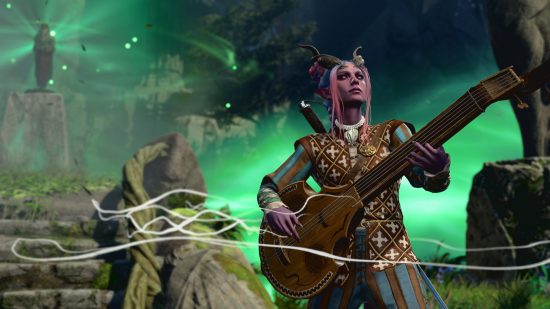
Bard
Through study and adventure, the Bard has mastered song and speech into powerful magic. Due to their high charisma, Bard’s are capable of easily inspiring allies while also bringing the fight to the enemy. Bard’s typically use buffing, debuffing, and crowd control effects in combat.
- Bard subclasses – College of Lore, College of Valor, College of Swords
- Saving Throw proficiency – Charisma, Dexterity
- Armor proficiency – Light
- Weapon proficiency – Simple, Hand Crossbow, Rapier, Longsword, Shortsword, Musical Instrument
Cleric
Clerics are representatives of the gods they worship, turning that divine magic into a force for good or ill, depending on who you are. During character creation, Clerics will be able to pick their deity which determines their Subclass. This makes the Cleric unique as they unlock this immediately.
- Cleric subclasses – Light Domain, Life Domain, Trickery Domain, Knowledge Domain, Nature Domain, Tempest Domain, War Domain
- Saving Throw proficiency – Wisdom, Charisma
- Armor proficiency – Light, Medium, Shield
- Weapon proficiency – Simple
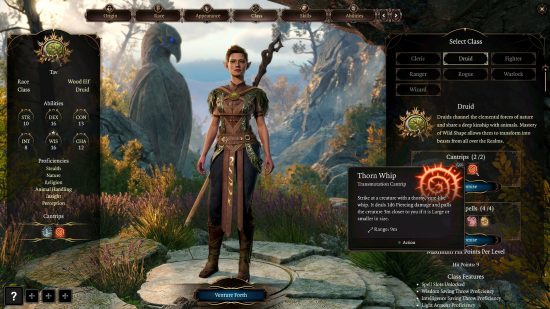
Druid
Druid’s channel the elemental forces of nature and wildlife into offensive and defensive spells. They can also transform into wild beasts, giving them lots of room for crafting your own story in the rich world of Baldur’s Gate. With offense, defense, and even healing under their grasp, the Druid is a highly versatile class.
- Druid subclasses – Circle of the Moon, Circle of the Land, Circle of Spores
- Saving Throw proficiency – Wisdom, Intelligence
- Armor proficiency – Light, Medium, Shield
- Weapon proficiency – Simple, Club, Dagger, Dart, Javelin, Mace, Quarterstaff, Scimitar, Sling, Spear, Sickle
Fighter
Fighters have mastered the art of combat, able to wield a whole arsenal of weapons with unmatched prowess. Being able to use just about anything, the Fighter is one of the more straightforward Baldur’s Gate 3 classes, making them a great choice for beginners and veterans alike.
- Fighter subclasses – Battle Master, Eldritch Knight, Champion
- Saving Throw proficiency – Strength, Constitution
- Armor proficiency – Light, Medium, Heavy, Shield
- Weapon proficiency – Simple, Martial
Monk
The Monk is a master of martial arts. In their pursuit of physical and spiritual perfection, they can be great close-quarters damage dealers. Alongside their proficiency in acrobatics and athletics, they’re also a great class to have outside of combat. Being learned in history and religion, the Monk is a wise and knowledgeable character that can help during exploration and conversations.
- Monk subclasses – Way of the Open Hand, Way of Shadow, Way of the Four Elements
- Saving Throw proficiency – Strength, Dexterity
- Armor proficiency – Unarmored
- Weapon proficiency – Simple
Paladin
Fueled by their oaths, Paladins uphold justice and righteousness, acting as a beacon of hope. Paladins combine divine magic with the raw power of steel to create a serious bruiser class.
- Paladin subclasses – Oath of the Ancients, Oath of Devotion, Oath of Vengeance, Oathbreaker
- Saving Throw proficiency – Wisdom, Charisma
- Armor proficiency – Light, Medium Heavy, Shield
- Weapon proficiency – Simple, Martial
Ranger
Rangers are master trackers and scouts who will stop at nothing to hunt their prey. They have great utility and damage output, especially at range. Rangers are also adept at magic, if you want a blend of both worlds.
- Ranger subclasses – Beast Master, Hunter, Gloom Stalker
- Saving Throw proficiency – Dexterity, Strength
- Armor proficiency – Light, Medium
- Weapon proficiency – Simple, Martial

Rogue
Experts in all things stealth and deception, paired with uncanny reflexes, a Rogue always looks for a way to get the upper hand in a fight. They are also adept at picking locks and disarming traps, aiding them in their subterfuge. If you usually play the assassin class in games, then the Rogue is the Baldur’s Gate 3 class for you.
- Rogue subclasses – Thief, Arcane Trickster, Assassin
- Saving Throw proficiency – Dexterity, Intelligence
- Armor proficiency – Light
- Weapon proficiency – Simple, Hand Crossbows, Rapiers, Shortswords, Longswords
Sorcerer
Sorcerer’s are natural spellcasters, drawing on ancient forces of chaos to cast powerful magic. With such devastating magic, however, comes their low health, making them almost a glass cannon.
- Sorcerer subclasses – Wild Mage, Draconic Bloodline, Storm Sorcery
- Saving Throw proficiency – Constitution, Charisma
- Armor proficiency – None
- Weapon proficiency – Quarterstaves, Light Crossbows, Daggers
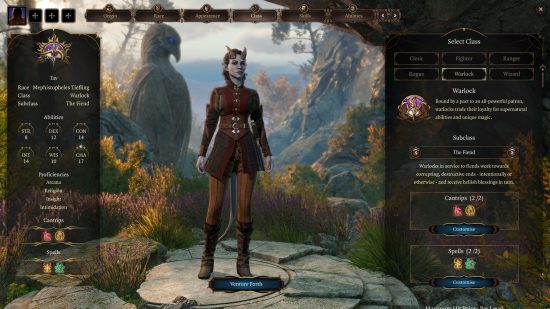
Warlock
Bound by a pact, Warlocks trade their loyalty to powerful patrons for supernatural abilities and magic. Like the Cleric, the Warlock also picks their Subclass immediately when making a character, so you’ll have a speciality right off the bat.
- Warlock subclasses – The Great Old One, The Fiend, Archfey
- Saving Throw proficiency – Wisdom, Charisma
- Armor proficiency – Light
- Weapon proficiency – Simple, Quarterstaff, Daggers, Light Crossbow
Wizard
Wizards are masters of the arcane, opting to specialize in specific schools of magic to hone their skills, combining ancient spells with modern research. While you’re limited on what equipment you can use, the Wizard boasts deadly magic to make up for it.
- Wizard subclasses – Abjuration School, Conjuration School, Divination School, Enchantment School, Evocation School, Necromancy School, Illusion School, Transmutation School
- Saving Throw proficiency – Intelligence, Wisdom
- Armor proficiency – None
- Weapon proficiency – Quarterstaves, Daggers, Light Crossbows, Slings, Dart
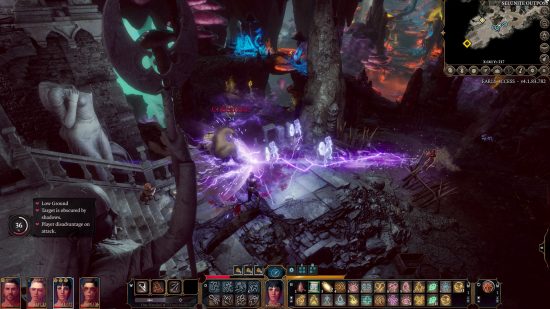
Baldur’s Gate 3 multiclassing explained
Baldur’s Gate 3 multiclassing lets you select more than one of the BG3 classes for a single character, letting them use skills and effects from each of the learned classes. BG3 follows similar rules to DnD 5E multiclassing, so it’s worth reading up on.
You can start multiclassing in BG3 by speaking to the NPC that offers respeccing services, who you will meet early on in the game. Here, you can invest in additional classes for each character.
Multiclassing is useful if you want to further specialize your classes. For example, the Bard is an excellent buffer and support character, but they don’t deal much damage. Multiclassing a Bard with a Warlock or Wizard can be great for giving them access to more damaging spells, especially if your other party members don’t deal much damage. Keep in mind though, this does limit your maximum potential as you can’t invest fully in one class. As they say, a jack of all trades is a master of none.
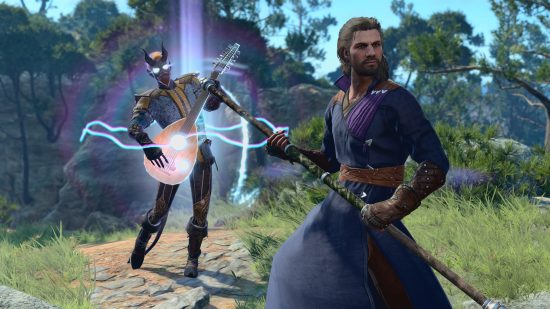
Baldur’s Gate 3 companion classes
These are the Baldur’s Gate 3 companion classes:
- Astarion – Rogue (High Elf)
- Shadowheart – Cleric (High Half-Elf)
- Gale – Wizard (Human)
- Lae’zel – Fighter (Githyanki)
- Wyll – Warlock (Human)
- Karlach – Barbarian (Tiefling)
- Halsin – Druid (Wood Elf)
- Minthara – Paladin (Drow)
- Minsc – Ranger (Human)
- Jaheira – Druid (Half-Elf)
These BG3 companions and their subclasses are vital to making a strong party. And remember, while they have their set starting roles, these can be changed, altered with multiclassing, or specialized using different subclasses. So, you can mix and match until you’re happy with each of their setups. Given the limited Baldur’s Gate 3 party size, you’ll need to keep this in mind, especially if you’re taking on the harder difficulty modes.
And that’s all the Baldur’s Gate 3 classes and subclasses available at launch in the turn-based RPG by Larian Studios. Given the track record of the developers, it wouldn’t be too surprising to see Baldur’s Gate 3 earn a place among the best RPG games you can play.
